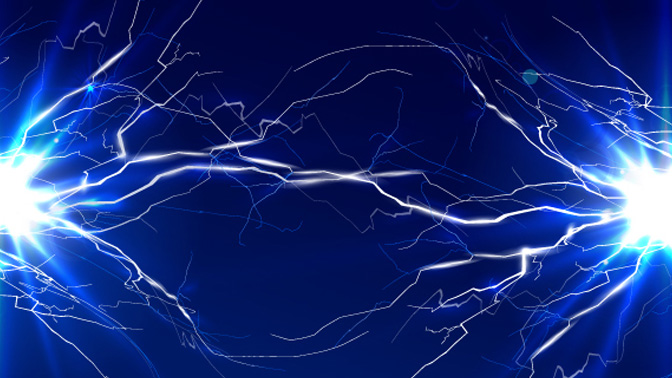Home page Description:
Study provides new insight into how epileptic seizures are generated.
Posted On: April 10, 2017

Image Caption:
Seizures occur when there is a sudden burst of electrical activity in the brain that disrupts normal activity and transmission of signals between brain cells.
Seizures can cause uncontrolled movements or a momentary loss of consciousness. These are symptoms that are frequently experienced by people with epilepsy—a common brain disorder characterized by recurring, unexpected seizures.
Researchers are not exactly sure how seizures are generated, but it is widely believed that potassium plays a role. Potassium is an electrically charged ion essential for healthy brain function. It moves across the cell membrane through specific channels, transmitting the electrical signals that regulate brain activity. However, brain activity can be disrupted when potassium levels are imbalanced, leading to a seizure.
To better understand the connection between potassium regulation and seizure onset, Krembil Senior Scientist, Dr. Peter Carlen, and his collaborators recently examined the role of a channel, known as the connexin-43 gap junction channel, that controls potassium distribution between brain cells called astrocytes.
Using measurements in the mouse brain, they discovered that blocking connexin-43 gap junctions significantly increased potassium levels outside of the cell; however, this imbalance was not enough to induce seizure activity.
When the researchers increased potassium levels using a compound that is known to induce seizure activity, they were able to cause spontaneously recurring seizures, in a part of the brain known as the cerebral neocortex, in association with raised potassium. In contrast, adding potassium directly to the system without using the compound did not generate seizures.
“We have shown that you can achieve high levels of potassium without triggering seizures by blocking connexon-43 gap junctions and in so doing demonstrated the powerful role that these channels play in controlling potassium levels in the brain,” explains Dr. Carlen. “To the best of our knowledge this is the first study to demonstrate that higher potassium levels do not cause seizures in the cerebral neocortex.”
This work was supported by the Canadian Institutes of Health Research, Brain Canada and the Toronto General & Western Hospital Foundation.
Bazzigaluppi P, Weisspapir I, Stefanovic B, Leybaert L, Carlen PL. Astrocytic gap junction blockade markedly increases extracellular potassium without causing seizures in the mouse neocortex. Neurobiol Dis. 2017 May. doi:10.1016/j.nbd.2016.12.017.
Researchers are not exactly sure how seizures are generated, but it is widely believed that potassium plays a role. Potassium is an electrically charged ion essential for healthy brain function. It moves across the cell membrane through specific channels, transmitting the electrical signals that regulate brain activity. However, brain activity can be disrupted when potassium levels are imbalanced, leading to a seizure.
To better understand the connection between potassium regulation and seizure onset, Krembil Senior Scientist, Dr. Peter Carlen, and his collaborators recently examined the role of a channel, known as the connexin-43 gap junction channel, that controls potassium distribution between brain cells called astrocytes.
Using measurements in the mouse brain, they discovered that blocking connexin-43 gap junctions significantly increased potassium levels outside of the cell; however, this imbalance was not enough to induce seizure activity.
When the researchers increased potassium levels using a compound that is known to induce seizure activity, they were able to cause spontaneously recurring seizures, in a part of the brain known as the cerebral neocortex, in association with raised potassium. In contrast, adding potassium directly to the system without using the compound did not generate seizures.
“We have shown that you can achieve high levels of potassium without triggering seizures by blocking connexon-43 gap junctions and in so doing demonstrated the powerful role that these channels play in controlling potassium levels in the brain,” explains Dr. Carlen. “To the best of our knowledge this is the first study to demonstrate that higher potassium levels do not cause seizures in the cerebral neocortex.”
This work was supported by the Canadian Institutes of Health Research, Brain Canada and the Toronto General & Western Hospital Foundation.
Bazzigaluppi P, Weisspapir I, Stefanovic B, Leybaert L, Carlen PL. Astrocytic gap junction blockade markedly increases extracellular potassium without causing seizures in the mouse neocortex. Neurobiol Dis. 2017 May. doi:10.1016/j.nbd.2016.12.017.

